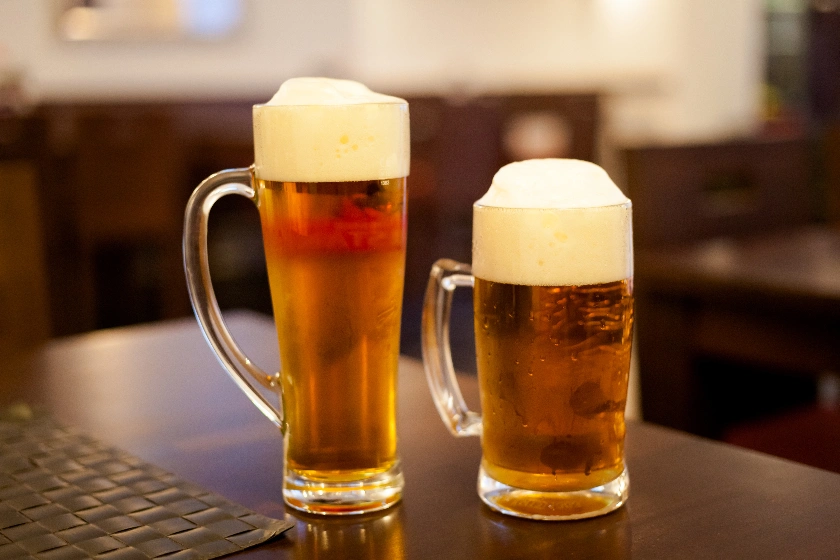
Have you ever traveled to Europe and ordered a beer, only to be surprised by the large, frothy head sitting on the top? If you’re American (or British), this is not something you’re typically used to, and you may have found yourself wondering why European beer has so much head.
European beer has a larger foam head due to cultural preferences. The larger head is an appetizing sign of a quality, well-carbonated beer and will also stop the beer underneath from touching the air and going bitter.
In this blog post, I’m going to dive into the science behind the foam and explore the reasons why European beer is famous for its creamy head. I’ll look at whether it’s a cultural preference, glass size, or a result of the brewing process and even explore regional differences.
What Does Beer Head Do?
Beer head actually plays an essential role in the beer-drinking experience. The head can help preserve and release the beer’s flavors and aromas, making it more enjoyable to drink.
Additionally, the foam can help to prevent oxidation. Have you ever got to the bottom of a glass of beer and noticed the last mouthful tastes pretty bitter and awful? That is because you are drinking the dregs of beer that has been in contact with the air the most. The foam head prevents direct contact with the air.
It also helps to regulate the beer’s temperature by acting as an insulator, keeping the liquid below cooler for when you sip it.
This all helps to maximize the wonderful flavor of the beer as it hits your taste buds.
Beer head, also known as foam or froth, is just a natural byproduct of the brewing and pouring process. It is formed by the release of the carbon dioxide gas that occurs during fermentation, which gets trapped in the beer and forms bubbles.
When the beer is poured into a glass, the CO2 is released from the liquid and quickly rises to the surface, creating a layer of foam. The proteins and amino acids present in the beer also contribute to the head, helping to stabilize the bubbles and create a thicker, creamier texture.
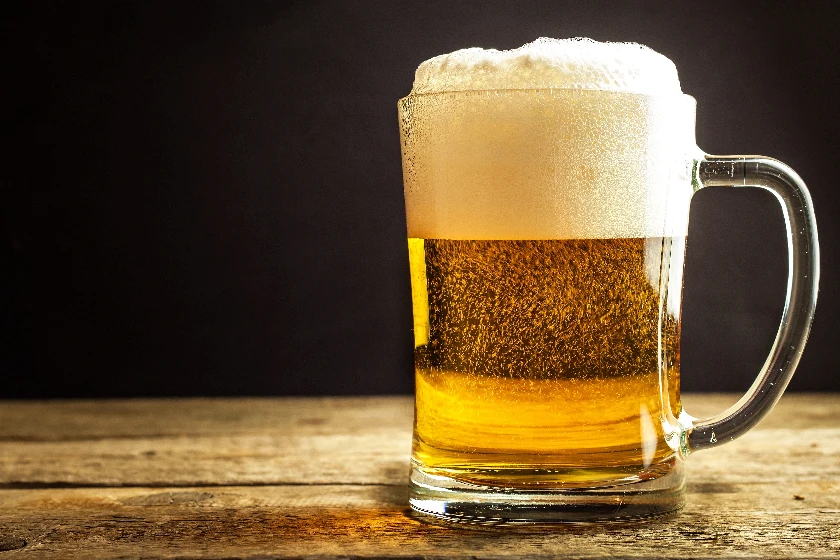
Why Does European Beer Have More Head?
European beer is typically known for its large, frothy heads, which can sometimes be several inches tall, known as the three-finger rule at the Oktoberfest festival! However, this is not the case in every country.
Many beer drinkers in the UK prefer a thinner head of foam on their beer, just like Americans. You often get people asking the bartender at the pub to “top it up” if the head is a bit too large.
In Germany, Belgium, and the Czech Republic, three renowned beer-drinking countries in Europe, you will often see large heads. This mainly comes down to cultural preference. A large head for them indicates a quality beer and the glasses will accommodate some extra space for the head.
This isn’t the case in American and British pint glasses where the measurement is usually to the top of the glass. This unit of measurement means that if you are served a large head then you are getting a smaller measure.
Check out our article on the other main differences between American and European beer.
European beer also has lots of head as the beer is almost always freshly poured from a tap rather than a bottle. This releases more carbon dioxide, which leads to more froth.
The person pouring the beer will often do this in a way that helps to agitate the beer and release more carbon dioxide, which leads to more foam. Sometimes the tap is even specially designed to create even more froth to make sure of a thick, creamy head.
There are other factors at play here too, including the type of beer, the serving temperature, and even the glassware.
In many European countries, the beers are brewed specifically to create more of a head as it’s poured. A thick, fluffy head is often seen as a sign of quality beer across the region so no wonder brewers there strive for this.
Additionally, European beer is often served in specialized glassware, which is designed to promote the formation of a foamy top.
For example, German wheat beer is typically served in tall, slender glasses called “weizen” glasses, which have a narrow shape that promotes the formation of a thick, creamy head. In Belgium, beers like lambics are served in wide, shallow glasses called “flutes,” which help to promote the beer’s fruity aromas and maintain a healthy head.
- Related article: Why Doesn’t Europe Have Light Beers Like The USA?
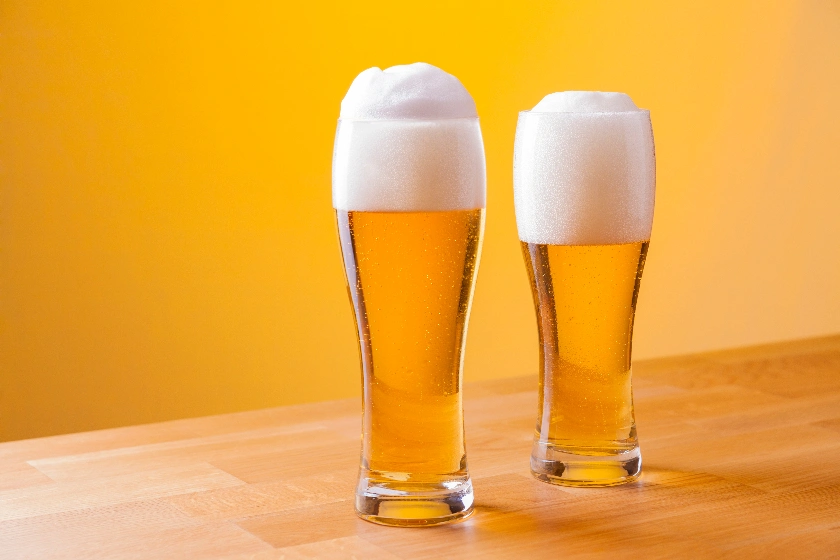
Why Does American And British Beer Have Less Head?
Compared to beer made on the European continent, American and British beer typically have less head in the glass. That’s a bit of a generalization and there are regional differences but this is a fair statement.
A few reasons are; how the beer is brewed, glassware, serving temperature, and carbonation level.
The glassware used in the United States and the UK is often different from that used in Europe. American and British beer is commonly served in pint glasses, which have a wider top. This makes it less likely to form a creamy head compared to the thinner shape used in Europe.
Historically, the pint glasses act as the measure, so you usually fill the beer to the top. This doesn’t leave space for much head.
American and British beers tend to be less carbonated than European beers, which means there is less gas available to form fluffy foam.
British pubs serve a lot of cask ales which are only naturally carbonated, unlike a gassy keg beer which has added carbonation.
American bars also serve lots of bottles rather than an emphasis on producing foamy beers in glasses like in Europe.
In the end, countries tend to get into their own tastes and habits and stick with them.
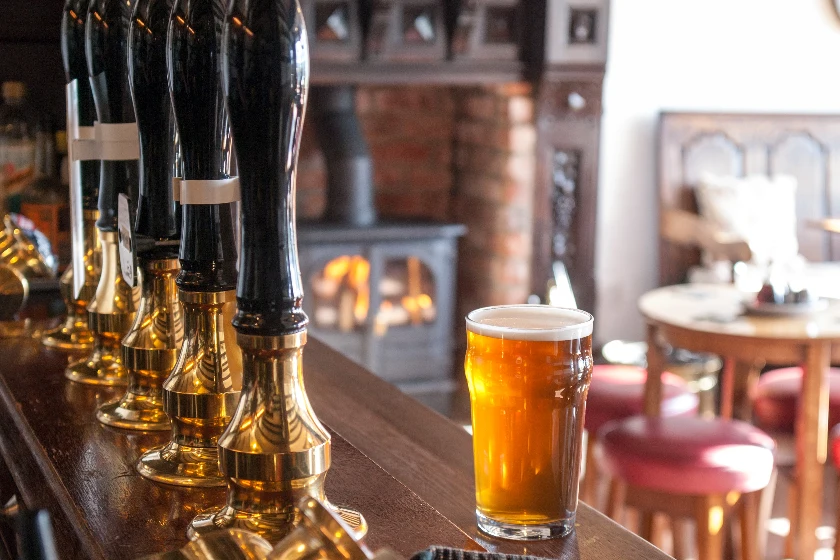
Does German Beer Have The Most Head?
Germany, Belgium, and the Czech Republic are among the countries which drink beer with the most head.
The prize for the most head on a beer probably goes to the Czech Republic, where they will happily serve you a glass almost full of nothing but foam, called a mlíko or “milk beer”.
When it comes to a beer with lots of head, German beer is often considered a front-runner. German wheat beer, in particular, is known for its thick, creamy head which can measure several inches deep.
This is due to the combination of cultural and traditional preferences mentioned, including the pouring technique, beer CO2 levels, serving temperature, and glassware.
The importance of the head on a German beer is not just about appearance, but also about the flavor and aroma that it brings to the drinking experience.
In addition, German beer is subject to the Reinheitsgebot, or German beer purity law, dating to 1516, which mandated that beer can only be brewed using three ingredients: water, barley, and hops.
This means that German brewers must rely on traditional brewing techniques to create unique and flavorful beers.
in the czech republic you can order your beer 'Mlíko' pic.twitter.com/dG0uannigt
— snufkin (@sn_fk_n) May 22, 2021
Other Beer Types And Their Head Traditions
While the focus of this article has been on European and American beers, it’s worth noting that other countries and regions have their own unique traditions when it comes to how deep the foam should be on top of the beer.
For example, in Japan, beer is typically poured with a head that could be up to 40% of the beer glass, as it is believed that more foam means the beer is fresher, which is very important to Japanese culture.
In some cases, the head of a beer can even be a defining characteristic of a particular style. For example, a proper pour of the Irish stout Guinness should result in a thick, creamy head that lasts until the last sip.
This head is achieved through the use of a nitrogen and carbon dioxide blend known as “Guinness Gas,” which creates smaller bubbles and a creamier texture.
Pouring and letting the Guinness settle correctly is an important and skilled job of a barman.
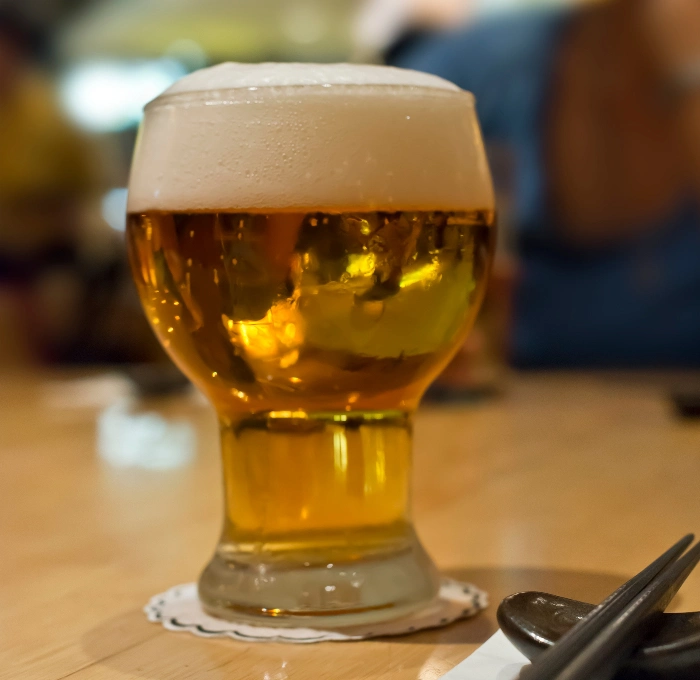
Conclusion
That wraps up my article on why European beers tend to have more head than American and British varieties and I hope you’ve found it interesting.
It’s mostly down to culture, traditions, and the type of beer being served, which can vary by country.
The countries which enjoy a large head usually see it as a sign of quality and good carbonation, so it’s encouraged. Countries that don’t like large head often see it as a waste of actual beer space.
The next time you find yourself in Europe enjoying a glass of frothy beer, remember that there’s a reason for that thick foam on top – and it’s not just because the bartender poured too vigorously. Prost!
